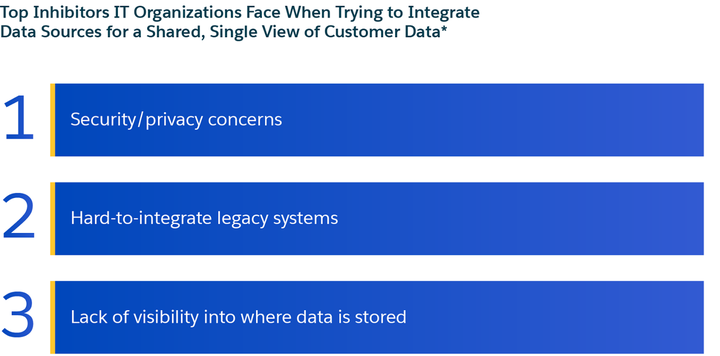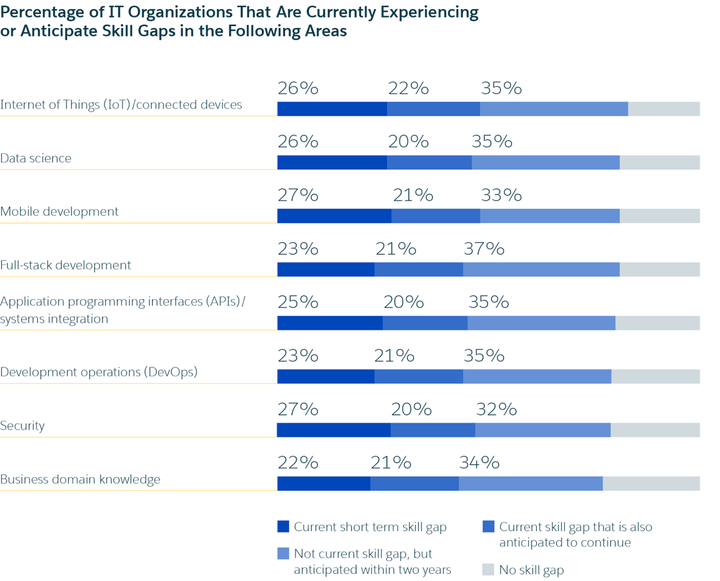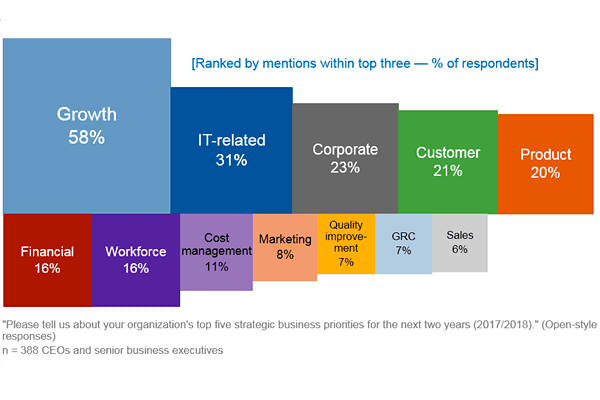In a recent post, I discussed the fundamental and unprecedented shift that IT teams are making toward becoming business service brokerages instead of the traditional “cost centers” tasked with infrastructure maintenance. One of the primary ways that IT teams are measuring success under this new model is based on business satisfaction scores. Yet, despite 74% of IT leaders identifying business satisfaction scores as a leading KPI, IT teams are only able to deliver on 56% of customer-facing business initiatives, on average, according to Salesforce’s second annual “State of IT” report. In other words, nearly half of these requests fielded by IT teams go unfulfilled.
How can IT teams keep up with escalating business demands if more than half of the requests are never addressed?
IT’s Biggest Challenge: Legacy Tech
It’s no secret that today’s customers expect consistency and continuity in their interactions across different departments like sales, customer service, and marketing. In fact, 73% of consumers and 78% of business buyers are likely to switch brands if it feels like dealing with different companies versus different departments within the same company. The truth is, customers don’t care about the number of business units in your company and the disparate systems in which they may operate; they want consistent experiences regardless. Which is why 61% of IT leaders have made it a high priority to provide a single view of the customer — and of those, high-performing teams are 3.2x more likely than underperformers to call this a critical priority.
Yet, standing in the way of achieving this goal is none other than legacy tech. In fact, more than half (52%) of IT leaders cite legacy tech as a major challenge to meeting their strategic objectives.
A key challenge wrought by legacy tech in today’s Age of the Customer is integrating the myriad of data into a “single source of truth.” Despite leaders proclaiming the need for a single view of their customers, only 29% have integrated 75% or more of their data sources. This is most often due to inhibitors including:
- Security/privacy concerns
- Hard-to-integrate legacy systems
- Lack of visibility into where data is stored (including highly distributed data and shadow IT)

IT struggles to integrate data sources
Skills Gap Widens in Every Area
Compounding IT’s struggle with antiquated systems are critical skill gaps in nearly every domain — which are only expected to widen over the next two years. Among these areas of inadequate expertise are connected devices (IoT), full-stack development, data science, and mobile. Even the area ranking highest for “no skill gap” is considerably low, as you can see in the chart below; only 22% say there’s no gap in business domain knowledge. CIOs know that the IT skills gap is significantly slowing down digital transformation.

Skill gaps will continue to widen in every domain
As the artificial intelligence (AI) wave gathers momentum, skills that drive robust intelligence capabilities are in particularly short supply.
Today, only 42% of CEOs have begun digital business transformation. Legacy technology and the widening skills gap negatively impact the adoption of new digital capabilities and innovation. Improving IT’s ability to accelerate innovation and execution velocity is the #2 priority for CEOs, per Gartner.

CEO Top Business Priorities for 2017 and 2018 - Gartner
Amid skill gaps and legacy tech, IT leaders must find a way to meet everyday demands and increase speed — all while streamlining systems for a clearer view of data and innovating to keep up with soaring customer expectations. Looking to the precedent set by high performers, IT teams can stand out from the pack by continually prioritizing a single view of the customer, and pushing the bounds of how that’s achieved by innovating for industry disruption.
Learn more about the challenges facing IT in Salesforce’s latest State of IT report at salesforce.com/stateofit.
